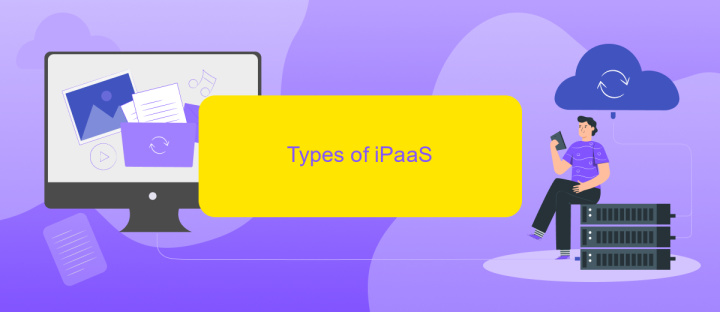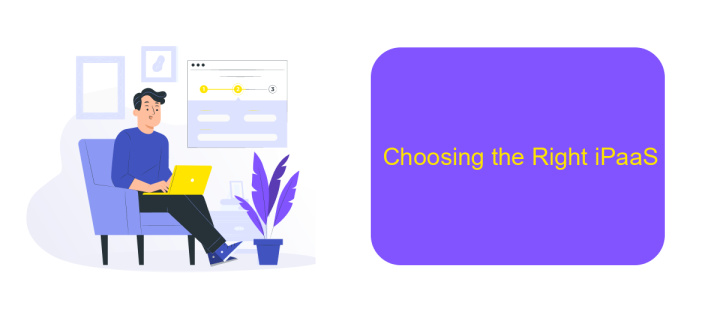iPaaS Tutorial
In today's rapidly evolving digital landscape, integrating various applications and data sources seamlessly is crucial for business efficiency and innovation. Integration Platform as a Service (iPaaS) offers a cloud-based solution to streamline these processes. This tutorial will guide you through the fundamentals of iPaaS, its benefits, and how to implement it effectively to enhance your organization's connectivity and performance.
Introduction to iPaaS
Integration Platform as a Service (iPaaS) is a cloud-based solution that simplifies the integration of various applications and data sources. It enables businesses to connect disparate systems, automate workflows, and enhance operational efficiency without the need for extensive coding or IT intervention.
- Seamless connectivity between different applications
- Automated data synchronization
- Scalable and flexible integration solutions
- User-friendly interface for managing integrations
- Real-time monitoring and analytics
One of the leading iPaaS providers is ApiX-Drive, which offers a robust platform for setting up integrations quickly and efficiently. With ApiX-Drive, users can connect a wide array of applications and automate data transfers with minimal effort. This service is particularly beneficial for businesses looking to streamline their operations and reduce manual workload, ensuring that all systems work in harmony.
Benefits and Use Cases of iPaaS

iPaaS (Integration Platform as a Service) offers numerous benefits, including streamlined integration processes, reduced operational costs, and enhanced data flow management. By centralizing integration tasks, iPaaS eliminates the need for manual coding, thus accelerating deployment times and reducing errors. Additionally, it provides scalability and flexibility, allowing businesses to adapt to changing needs without significant infrastructure changes. One notable example is ApiX-Drive, which simplifies the integration of various applications and services, ensuring seamless data synchronization and automation.
iPaaS is particularly beneficial in scenarios where businesses need to connect disparate systems, such as CRM, ERP, and marketing automation tools. It enables real-time data exchange, improving decision-making and operational efficiency. Companies can use iPaaS to integrate cloud-based and on-premises applications, facilitating hybrid environments. For instance, ApiX-Drive supports integrations across a wide range of services, making it easier for businesses to automate workflows and enhance productivity. Overall, iPaaS is a vital tool for organizations looking to optimize their IT ecosystems and drive digital transformation.
Types of iPaaS

Integration Platform as a Service (iPaaS) solutions come in various types, catering to different business needs and technical requirements. Understanding these types can help organizations choose the right iPaaS for their specific use cases.
- Cloud-based iPaaS: These platforms are hosted on the cloud, providing scalability and flexibility. They are ideal for businesses looking to integrate cloud applications and services.
- Hybrid iPaaS: This type combines both cloud and on-premises integration capabilities, making it suitable for organizations with a mix of legacy systems and modern cloud applications.
- Enterprise iPaaS: Tailored for large organizations, these solutions offer advanced features like API management, data governance, and complex workflow automation.
- API-centric iPaaS: Focused on API management and integration, these platforms, such as ApiX-Drive, enable seamless connectivity between various applications through APIs, simplifying the integration process.
Choosing the right type of iPaaS depends on factors such as the existing IT infrastructure, integration complexity, and specific business objectives. By evaluating these aspects, organizations can leverage iPaaS to streamline their integration processes and enhance operational efficiency.
Choosing the Right iPaaS

Choosing the right iPaaS (Integration Platform as a Service) is crucial for ensuring seamless integration of your business applications. The right iPaaS should align with your company’s specific needs, scalability requirements, and budget constraints. It's important to evaluate the platform’s ease of use, integration capabilities, and support services.
Start by identifying the key features that are most important for your business. Consider whether the iPaaS supports the applications you currently use and if it can easily integrate with future tools. Additionally, assess the platform's data security measures and compliance with industry standards.
- Integration capabilities with existing and future applications
- Ease of use and user-friendly interface
- Scalability to grow with your business
- Data security and compliance
- Cost-effectiveness and budget alignment
- Reliable customer support and documentation
Platforms like ApiX-Drive offer robust integration solutions that can be tailored to meet diverse business needs. With its user-friendly interface and wide range of supported applications, ApiX-Drive simplifies the integration process, making it an excellent choice for businesses looking to streamline their operations.
Implementing and Managing iPaaS
Implementing iPaaS involves a series of strategic steps to ensure seamless integration across various applications and systems. Start by identifying the specific needs and objectives of your organization. Evaluate the existing IT infrastructure and determine the compatibility of different applications. Choose an iPaaS provider that aligns with your requirements, offering robust features for data integration, transformation, and real-time processing. During the implementation phase, ensure proper configuration and mapping of data flows to achieve optimal performance.
Managing iPaaS requires continuous monitoring and maintenance to ensure smooth operations. Utilize tools like ApiX-Drive, which simplifies the process of connecting different applications without requiring extensive coding knowledge. ApiX-Drive offers an intuitive interface for setting up and managing integrations, making it easier to automate workflows and synchronize data. Regularly review integration performance, address any discrepancies, and update configurations as needed to adapt to evolving business needs. Effective management ensures that your iPaaS solution remains scalable, secure, and efficient over time.
- Automate the work of an online store or landing
- Empower through integration
- Don't spend money on programmers and integrators
- Save time by automating routine tasks
FAQ
What is iPaaS?
How can iPaaS benefit my business?
What are some common use cases for iPaaS?
How easy is it to set up integrations with iPaaS?
What should I consider when choosing an iPaaS provider?
Time is the most valuable resource in today's business realities. By eliminating the routine from work processes, you will get more opportunities to implement the most daring plans and ideas. Choose – you can continue to waste time, money and nerves on inefficient solutions, or you can use ApiX-Drive, automating work processes and achieving results with minimal investment of money, effort and human resources.


